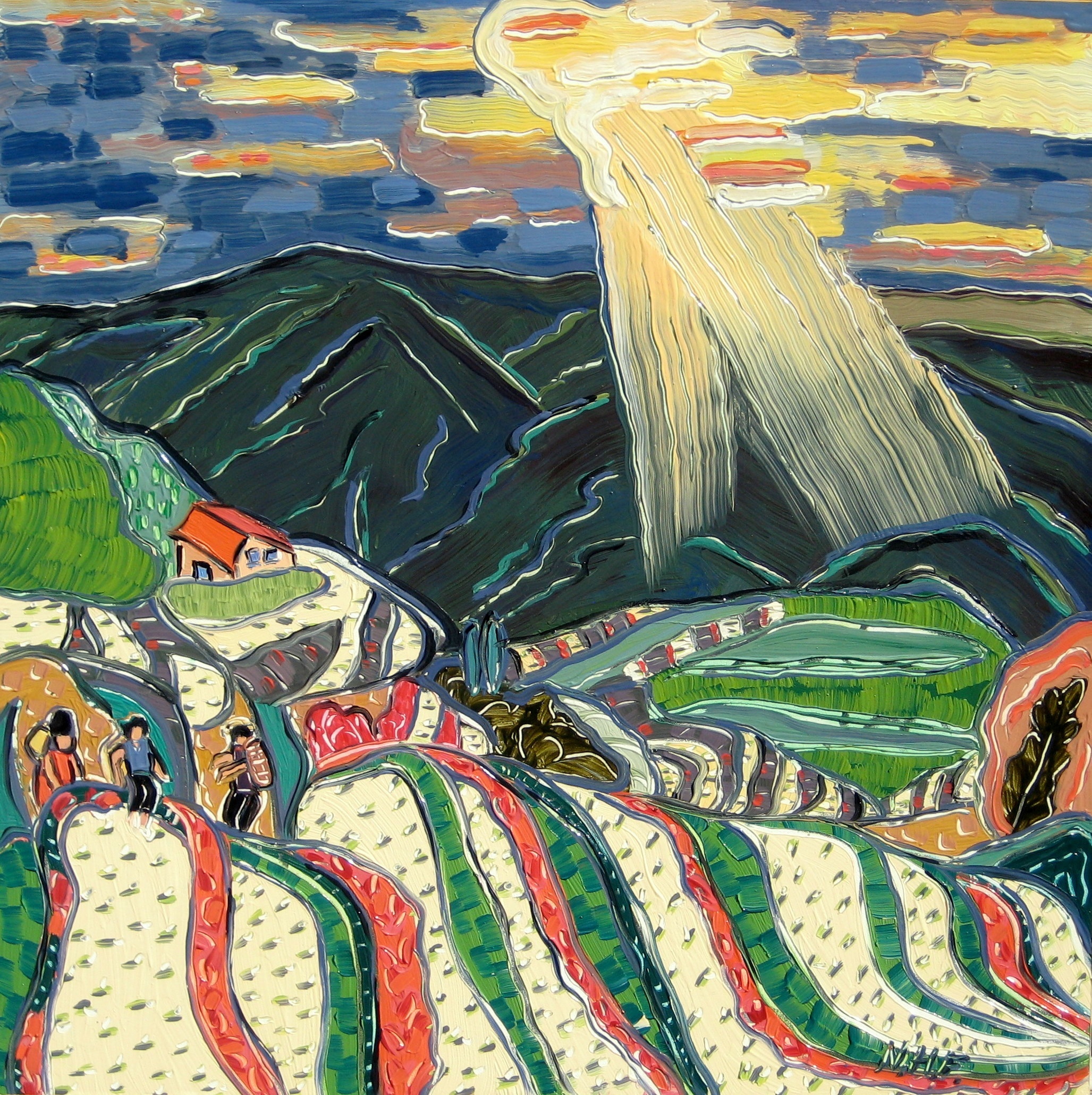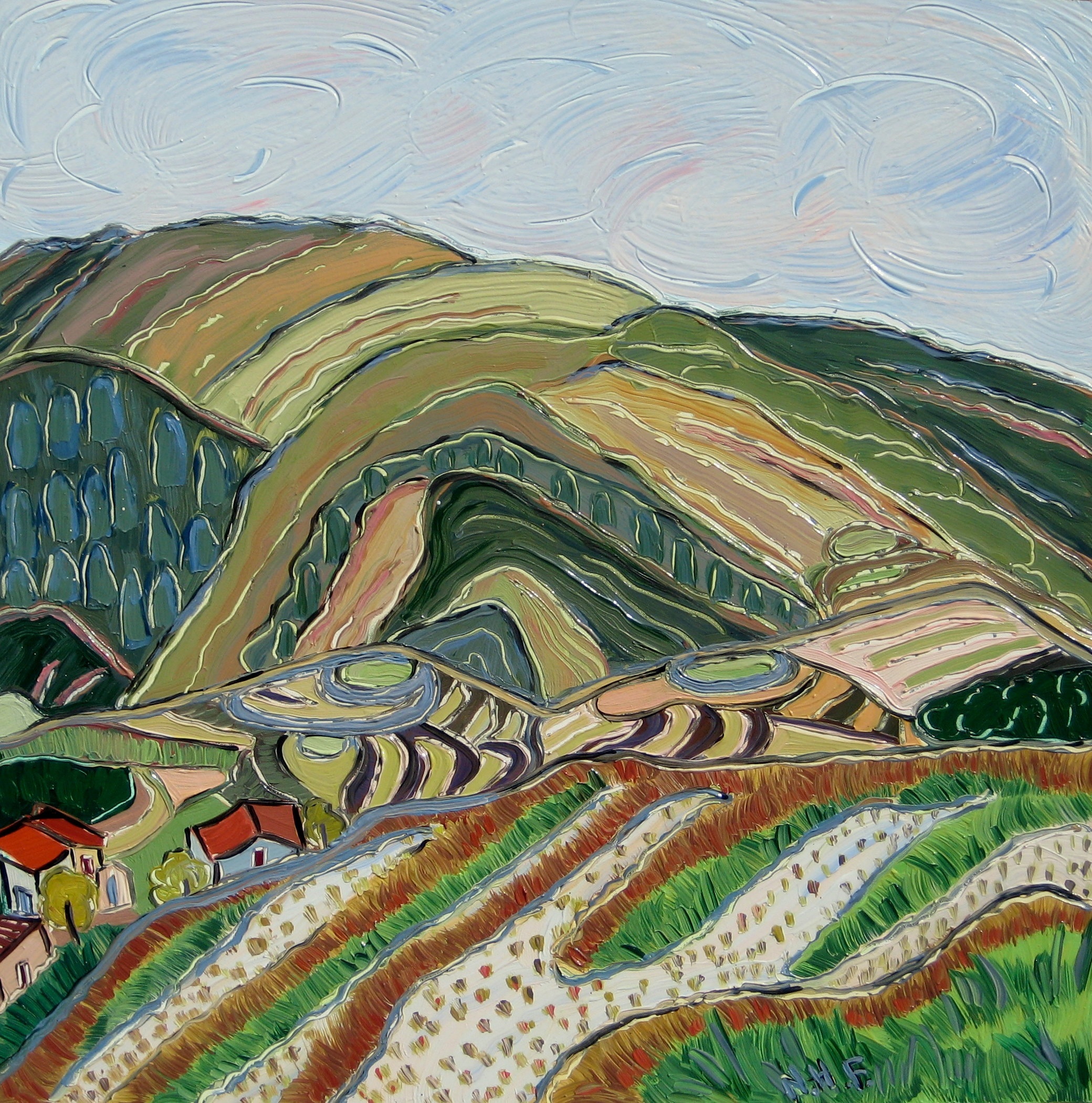Exaggerated: From the Eyes of a Curator
“Exaggerated: Not How I Remember It” Fountain Street’s Associate Member group show runs from July 31–August 25 with an opening reception on Friday, August 2 from 6–8 pm. The show is curated by Daniel Zeese and Mia Cross. Below we hear from Daniel Zeese about the experience curating and interpreting this exhibition.
It is always so interesting when people tell me about my own work. I tend to know why and what I think it is that I am making, but I usually don’t know what it truly is until I hear what a stranger interprets. This show is based around that concept. How do we, the viewer, discover a narrative and what do we need to interpret? This happens through imagery, process, and mark-making; it happens through material; the titling of a work; the conversation of what it is we are looking at.
Think of the artist as a storyteller. They have specific tools they use to lead us through their work. On the most basic of levels, the work in this show acts as a snapshot into a moment. What we see upfront is only our first interpretation, but what happens if we dig deeper?


In Nan Has Feldmans works, “Evening at the Rice Terrace” we get a sense of place. A landscape of mountains, no two mountain typologies. One that is distant, seemingly unchanged by time and one that is inhabited, worked, and altered by man. Both majestic in their own right. Pairing it with “Morning at the Rice Terrace”, those readings still exist, but now it becomes evident that its not just the image. The mark-making and control of color are at play. The stillness and urgency that is present in the air evokes a sense of time for the figures that inhabit the images, and a temperament for the natural environment. Reading the works from morning to evening gives us a sense of all the hours in-between, of labor and lunch. If we read them from evening to morning it become a story of the quiet night, the slowness of life before the sun breaks.


In a similar way John Daly reveals sequences in the pastoral. To me, there is something more reductive to this work that influences how I imagine the narrative of the landscape. When I look at these marks, I think of the artist in the studio trying to control the wetness of the paint and the scraping of tools against the canvas. The language of his actions inform the way we perceive these spaces. The gashes in the earth, damp earth blending with the sky. Individually these painting tell a story removed from time. Reading the titles, “Mooring IV” and “Mooring V”, informs us that there is more to the sequence, it alerts us to pay attention to details. There is an honesty to the plainer circle we see in each. Through the artists eyes we change elevation on a surface we cannot see, we see reflections, we are told to care about either the mountains or trees. The world outside of the canvas, and the thoughts behind the artists eyes are revealed.
What it is that we are exaggerating? We are not only posing this question to the artists, it is also a question we want you to think of when you are viewing the work. What is it that you believe in? What is it that you believe through the eyes of someone else? What is an image saying alone compared to a grouping? If each image is its own voice, can a grouping tell a larger story, in many voices?
I don’t want to give too much direction, or put limits of how we should look at the work, but instead take this opportunity to allow us to also experience the work in a new way.
Floating Shack, Traci Harmon-Hay
When I look at Traci Harmon-Hay’s Floating Shack there is a lot to unpack. It was really fun for me to sit next to Mia while reviewing the work for the show, because we both had such different readings of this particular painting. It’s fun and serious, and honest and imaginative, all at the same time. It now stands out to me, because every time I look at it I am lead in different directions of thought, that started with Mia’s different interpretation.
It doesn’t feel fair to me and to the work, or your experience of viewing the work, to give way all my thoughts and interpretation. Instead, I will challenge you to experiment with how you read these images. How dose a mark or color in one image make you read a mark or color in another? Also, try to imagine them in other contexts. How might they relate to each other? How might their differences reveal something about them individually, as well as a whole.
“Exaggerated: Not How I Remember It,” featuring the work of the Gallery’s Associate Members. The show of painting, photography, and mixed-media highlights the unique abilities of artists to interpret and tell stories. Through visual imagery, specific details of a story are either recalled or forgotten, brought to light or buried, minimized or exaggerated. These portrayals tell us not only their importance within a story, but also what is significant to the individual doing the telling. Artists have the ability to translate what they know through the language of art-making; what is remembered takes root in the act of creation. The duty of artists is to use their toolsets to reflect a distinct place, person, emotion, or story—muting some information while intentionally favoring aspects which become embedded as truths. In this, honesty equates to exaggeration. Artists: John Baker, Katherine Borkowski-Byrne, Robin Colodzin, John Daly, Linda DeStefano Brown, Traci Harmon-Hay, Nan Hass Feldman, Anita Loomis, Brigid McGivern, Pat Paxson, Anne Sargent Walker, and Tracy Spadafora.

